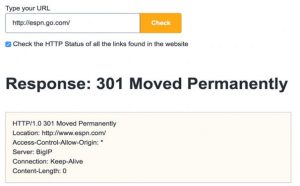
When I browsed a website in my computer, I came across to a failure message error code 301 Moved Permanently. What is the significance of this fault?
How To Fix The HTTP Error Code 301 And Reason For This Failure

You are getting this bug because the address has been a shift to another location.

For an instance, if you are requesting for www.olddomain.com, then it may be changed to www.newdomain.com.
It is not an error. You can take it as information about the whereabout of your required location. It is informing you about the replacement of the address.
You can check your domain address and try again. I hope it will fix this time.
How To Fix The HTTP Error Code 301 And Reason For This Failure

The “HTTP Error 301: Moved Permanently” error that you see on your browser sometimes is an HTTP status code indicating that the URI specified by the client or the browser has been moved or transferred to a new location using the method “HTTP redirect”. This allows the client to issue a new request to the web server and fetch or get the resource from the new location.
Web browsers normally follow HTTP 301 redirects without requiring user intervention. This HTTP status code is used for permanent URL redirection which means existing links or records using the URL that the response received should be updated. It is considered a best practice to use HTTP 301 redirect for upgrading users from HTTP to HTTPS. The following are included in RFC 2616:
- “Unless the request method was HEAD, the entity should contain a small hypertext note with a hyperlink to the new URL(s).”
- “If the 301 status code is received in response to a request of any type other than GET or HEAD, the client must ask the user before redirecting.”
- “If a client has link-editing capabilities, it should update all references to the Request URL.”
- “The response is cacheable unless indicated otherwise.”














